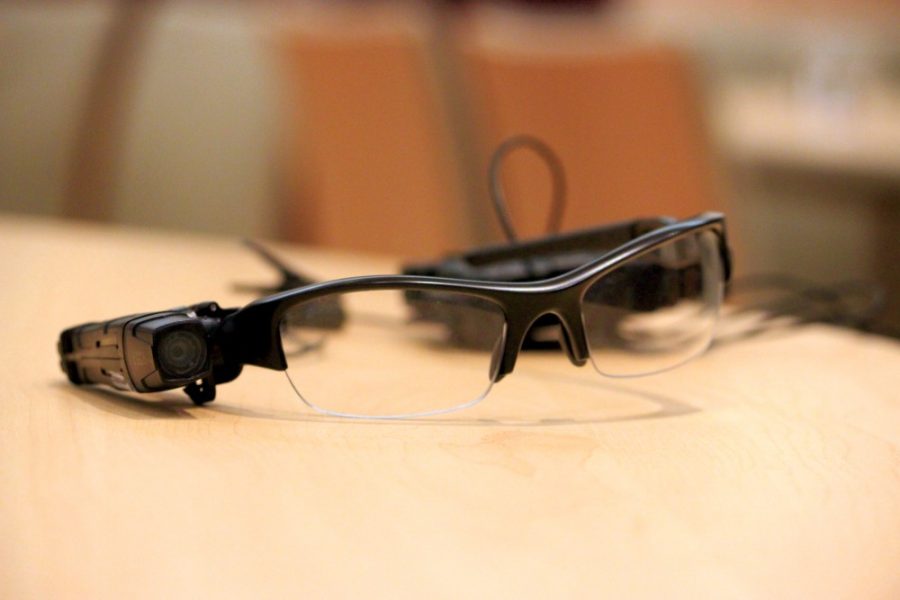Beginning the first week of November, the University of Arizona Police Department will implement the use of body cameras on some of their officers.
The announcement came during a UAPD town hall meeting on Thursday, Oct. 1. UAPD Chief Brian Seastone said it was time to start putting body cameras into action in the field.
The cameras are lightweight, come with a built in speaker and can be worn in various ways.
Another beneficial feature that comes with the camera is that the footage will be catalogued as a public record, making it available to any citizen requesting the film, said Seastone in the meeting.
They ordered 58 cameras and each officer up to the sergeant level will be equipped with a camera, says UAPD Crime Prevention Officer Joe Bermudez.
“We basically need to show our side of the story,” Bermudez said. “This is going to help protect our officers and it’s also going to protect the community.”
The cameras will be one dimensional, meaning they will only be able to see what is going on directly in front of them, but the audio recordings will be able to hear what is happening all around.
UAPD is not the first police department to initiate this, and will certainly not be the last.
In 2013, 32 percent of local police departments provided at least some officers with body-worn cameras and 6 percent provided some of their officers with weapon-attached cameras, states the Bureau of Justice Statistics’ 2013 Law Enforcement Management and Administration Survey.
By May of 2015, the Department of Justice announced a $20 million pilot program for body-worn cameras among police departments all over the country. This program is the beginning of President Obama’s proposal to invest $75 million over the next three years to provide 50,000 body-worn cameras to various law enforcement agencies throughout the US.
There are mixed feelings among students on whether or not these body cameras will make a difference.
Borix Espina, a freshman at the University of Arizona, agrees with Officer Bermudez.
“What’s going on lately with all this police brutality, just in case something happens the camera will show exactly what happens so they won’t wonder who is right and who is wrong,” said Espina.
Others are more skeptical of the cameras, saying they will not make a difference either way because of how TPD handled the 2014 riots after a loss during the NCAA basketball tournament to Wisconsin, which were recorded.
Police threw pepper canisters and pepper balls into the rioting crowd and used force on fans who approached the police line. A fan was forcibly held in place while officers kneed and punched him in the stomach and torso.
“I think it might create more issues,” said Rebecca Pitts, a UA graduate student. “In the times things have been recorded, I don’t feel like it really made a difference.”
Yamile Diaz, another UA graduate student, applauds UAPD on the attempt, saying it is better than doing nothing but is still unsure of the difference it will make.
Follow Elisabeth Morales on Twitter.









